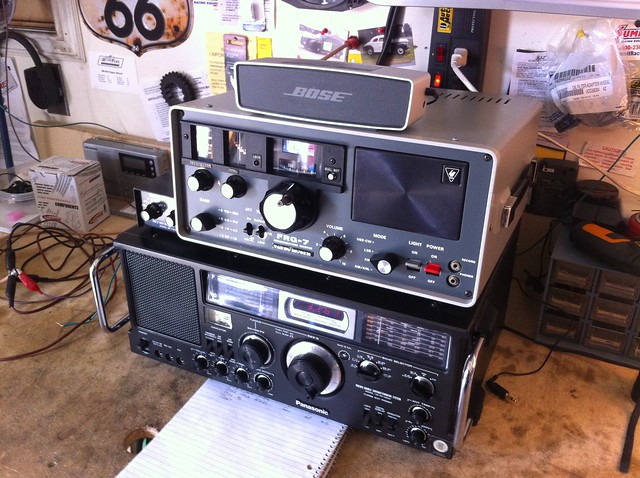Hello again Electro Tech,
I have a question about replacing Electrolytic capacitors,
I've picked up what turned out to be a sweet, early model Yaesu FRG-7 to compliment my now working again (thanks guys!) RF4800. Got it for a song, was really dirty to the point it would barely function. But after a thorough cleaning it looks 9/10 perfect and works pretty well.
On a whim, I'd bought a $15 eBay kit from KK4HXJ to replace all the electrolytic caps, but now I wonder if it's worth messing with, to my untrained ear, what seems to be a fairly decent functioning radio. Some internet talk suggests to always replace all 30 year old electrolytics...some say don't mess with them unless they show visible signs of failing, or testing can show a degredation. Mine all look like new, with no bulging, leaking or corrosion , even under a magnifier.
The one thing I do wonder about is this; if the volume is turned up past 1/2 way, a slight, steady and fine crackle is heard, getting more prominent as I increase output further. But it's not like a dirty pot or blown speaker might sound. Did not change after 2 cleanings. Could this be a cap gone or going bad in the amp section?
Anyway, there is only 15 caps to easily replace, do I go for it and at worst see maybe slight performance improvement, or do I leave this original frog well enough alone?
Any thoughts appreciated,
Cheers and thanks,
Mark

I have a question about replacing Electrolytic capacitors,
I've picked up what turned out to be a sweet, early model Yaesu FRG-7 to compliment my now working again (thanks guys!) RF4800. Got it for a song, was really dirty to the point it would barely function. But after a thorough cleaning it looks 9/10 perfect and works pretty well.
On a whim, I'd bought a $15 eBay kit from KK4HXJ to replace all the electrolytic caps, but now I wonder if it's worth messing with, to my untrained ear, what seems to be a fairly decent functioning radio. Some internet talk suggests to always replace all 30 year old electrolytics...some say don't mess with them unless they show visible signs of failing, or testing can show a degredation. Mine all look like new, with no bulging, leaking or corrosion , even under a magnifier.
The one thing I do wonder about is this; if the volume is turned up past 1/2 way, a slight, steady and fine crackle is heard, getting more prominent as I increase output further. But it's not like a dirty pot or blown speaker might sound. Did not change after 2 cleanings. Could this be a cap gone or going bad in the amp section?
Anyway, there is only 15 caps to easily replace, do I go for it and at worst see maybe slight performance improvement, or do I leave this original frog well enough alone?
Any thoughts appreciated,
Cheers and thanks,
Mark



